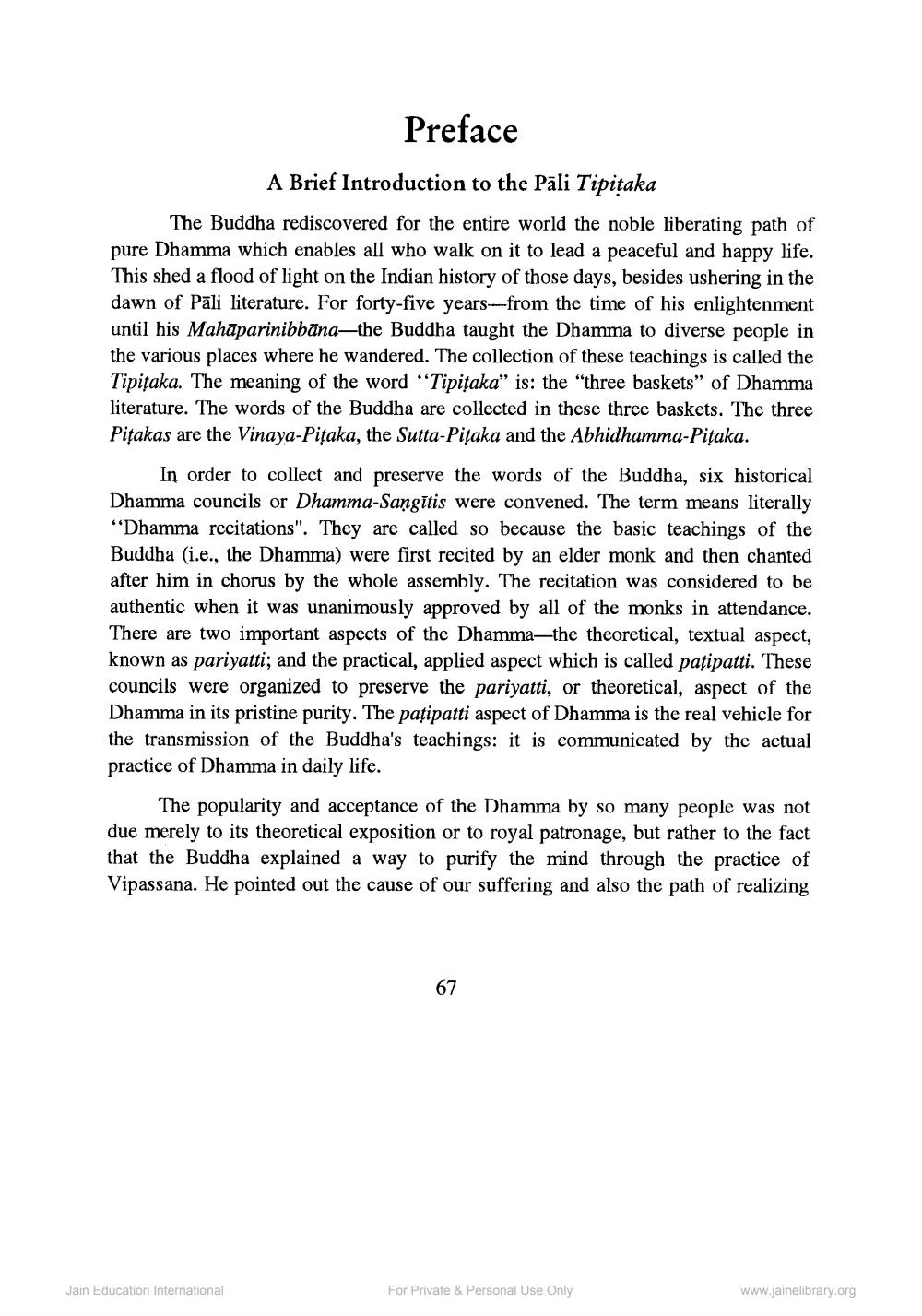________________
Preface A Brief Introduction to the Pāli Tipitaka The Buddha rediscovered for the entire world the noble liberating path of pure Dhamma which enables all who walk on it to lead a peaceful and happy life. This shed a flood of light on the Indian history of those days, besides ushering in the dawn of Pāli literature. For forty-five years--from the time of his enlightenment until his Mahāparinibbāna—the Buddha taught the Dhamma to diverse people in the various places where he wandered. The collection of these teachings is called the Tipitaka. The meaning of the word "Tipitaka" is: the "three baskets" of Dhamma literature. The words of the Buddha are collected in these three baskets. The three Pițakas are the Vinaya-Pitaka, the Sutta-Pitaka and the Abhidhamma-Pitaka.
In order to collect and preserve the words of the Buddha, six historical Dhamma councils or Dhamma-Sangitis were convened. The term means literally "Dhamma recitations". They are called so because the basic teachings of the Buddha (i.e., the Dhamma) were first recited by an elder monk and then chanted after him in chorus by the whole assembly. The recitation was considered to be authentic when it was unanimously approved by all of the monks in attendance. There are two important aspects of the Dhamma—the theoretical, textual aspect, known as pariyatti; and the practical, applied aspect which is called pațipatti. These councils were organized to preserve the pariyatti, or theoretical, aspect of the Dhamma in its pristine purity. The pațipatti aspect of Dhamma is the real vehicle for the transmission of the Buddha's teachings: it is communicated by the actual practice of Dhamma in daily life.
The popularity and acceptance of the Dhamma by so many people was not due merely to its theoretical exposition or to royal patronage, but rather to the fact that the Buddha explained a way to purify the mind through the practice of Vipassana. He pointed out the cause of our suffering and also the path of realizing
Jain Education International
For Private & Personal Use Only
www.jainelibrary.org




